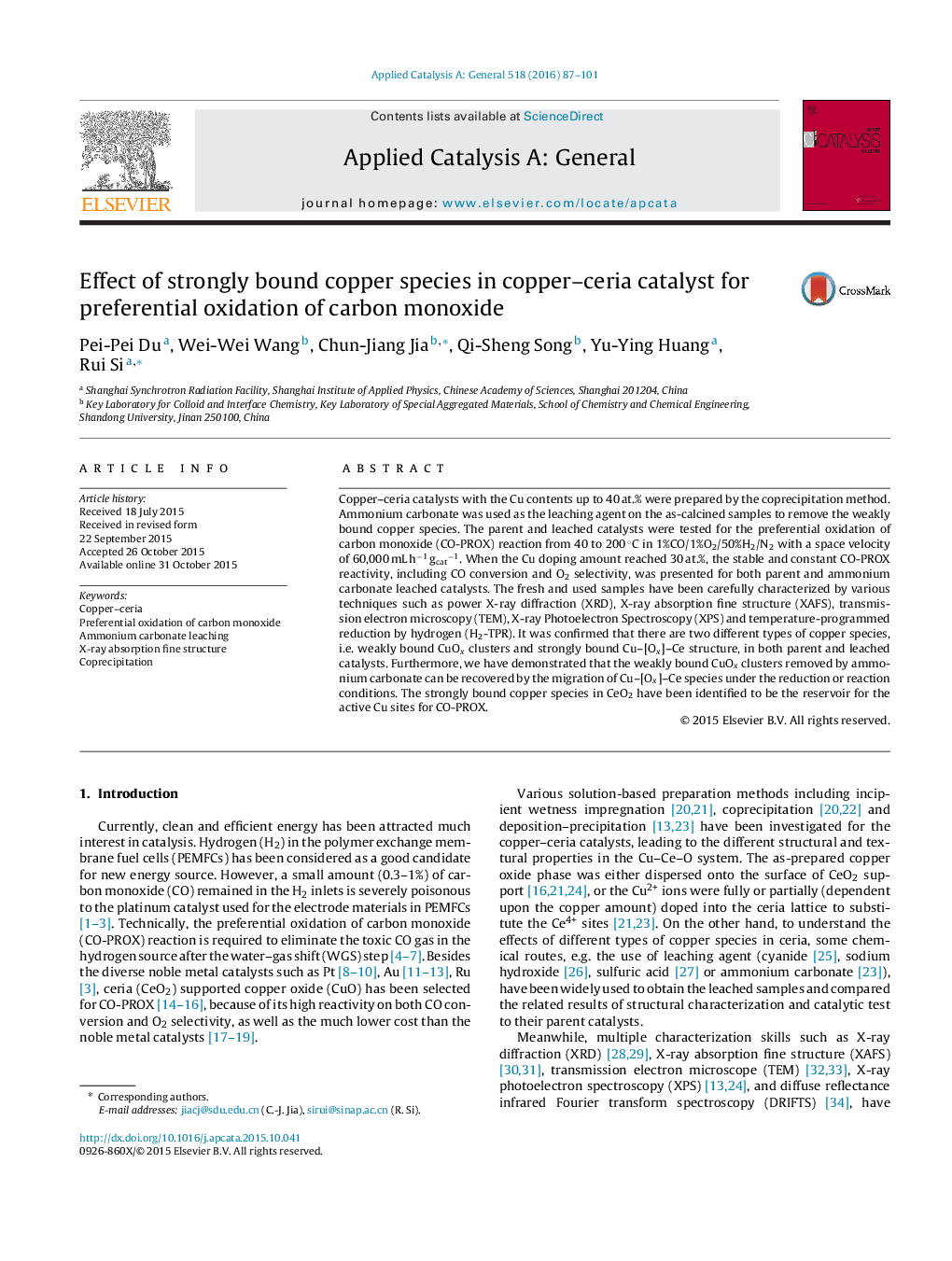| Article ID | Journal | Published Year | Pages | File Type |
|---|---|---|---|---|
| 38992 | Applied Catalysis A: General | 2016 | 15 Pages |
•Copper–ceria catalysts with the 5–40 at.% Cu were prepared by coprecipitation.•30 at.% Cu sample shows high and stable reactivity for CO-PROX.•Ammonium carbonate leaching was used to study the effect of copper species.•Strongly bound Cu–[Ox]–Ce structure can transform to the weakly bound CuOx clusters.•Strongly bound copper species act as the reservoir for active Cu sites.
Copper–ceria catalysts with the Cu contents up to 40 at.% were prepared by the coprecipitation method. Ammonium carbonate was used as the leaching agent on the as-calcined samples to remove the weakly bound copper species. The parent and leached catalysts were tested for the preferential oxidation of carbon monoxide (CO-PROX) reaction from 40 to 200 °C in 1%CO/1%O2/50%H2/N2 with a space velocity of 60,000 mL h−1 gcat−1. When the Cu doping amount reached 30 at.%, the stable and constant CO-PROX reactivity, including CO conversion and O2 selectivity, was presented for both parent and ammonium carbonate leached catalysts. The fresh and used samples have been carefully characterized by various techniques such as power X-ray diffraction (XRD), X-ray absorption fine structure (XAFS), transmission electron microscopy (TEM), X-ray Photoelectron Spectroscopy (XPS) and temperature-programmed reduction by hydrogen (H2-TPR). It was confirmed that there are two different types of copper species, i.e. weakly bound CuOx clusters and strongly bound Cu–[Ox]–Ce structure, in both parent and leached catalysts. Furthermore, we have demonstrated that the weakly bound CuOx clusters removed by ammonium carbonate can be recovered by the migration of Cu–[Ox]–Ce species under the reduction or reaction conditions. The strongly bound copper species in CeO2 have been identified to be the reservoir for the active Cu sites for CO-PROX.
Graphical abstractAmmonium carbonate leaching was applied to the coprecipitated copper–ceria. Both parent and leached catalysts up to 30 at.% Cu included uniform copper species in ceria. Fully oxidized Cu2+ component in fresh samples and metallic copper for used catalysts of 30–40 at.% Cu were verified. High and stable PROX reactivity appeared for 30 at.% Cu. It has been demonstrated that strongly bound Cu–[Ox]–Ce structure is the reservoir for surface active copper sites, and can recover weakly bound CuOx clusters on the CeO2 surface.Figure optionsDownload full-size imageDownload high-quality image (171 K)Download as PowerPoint slide
